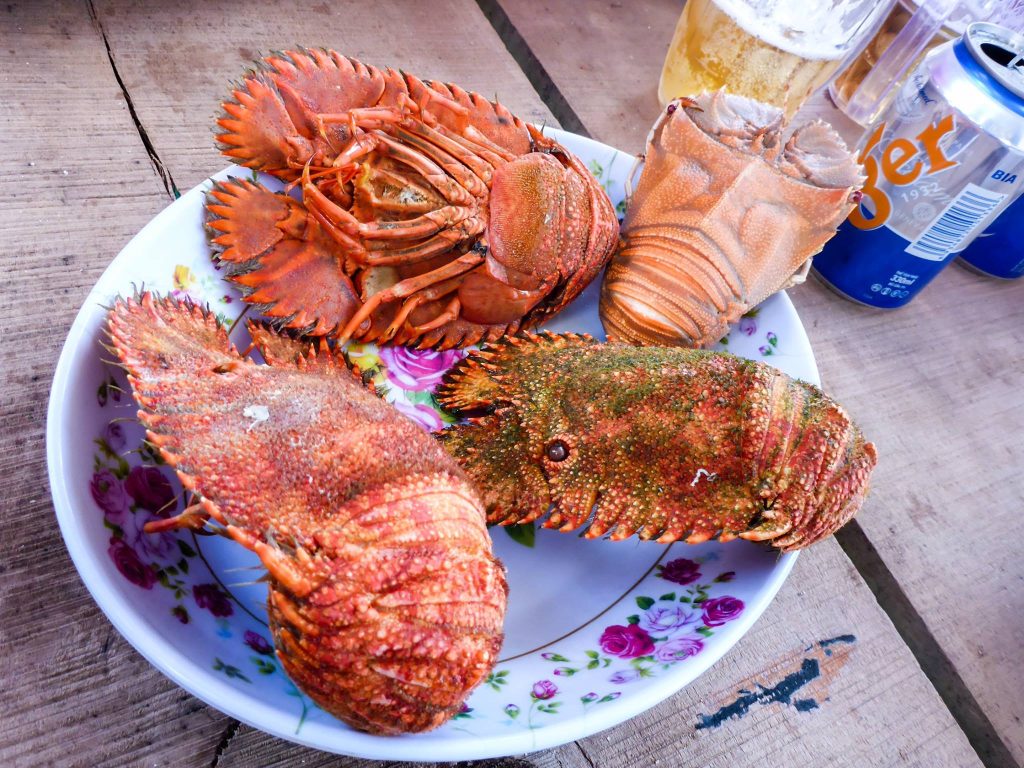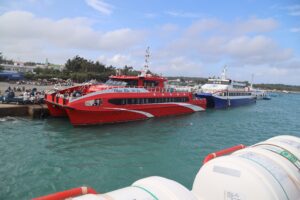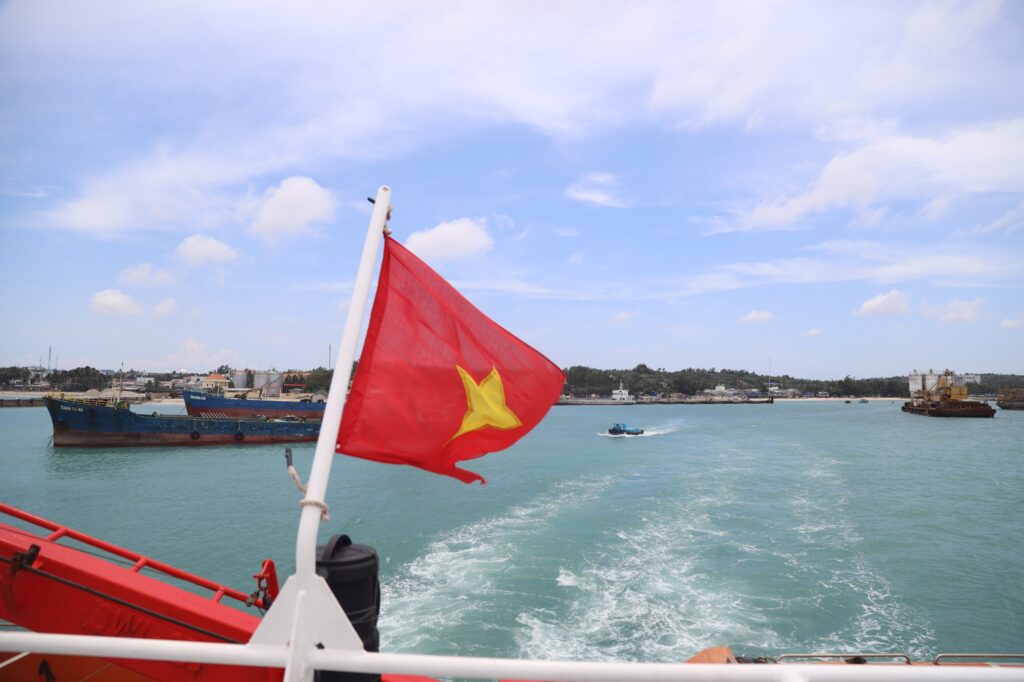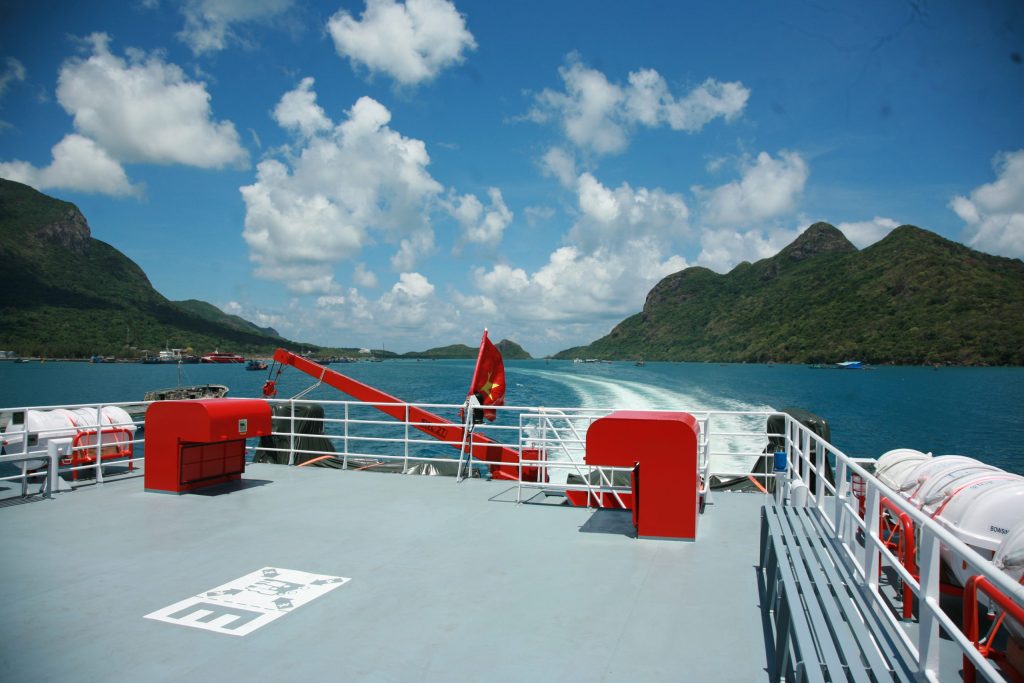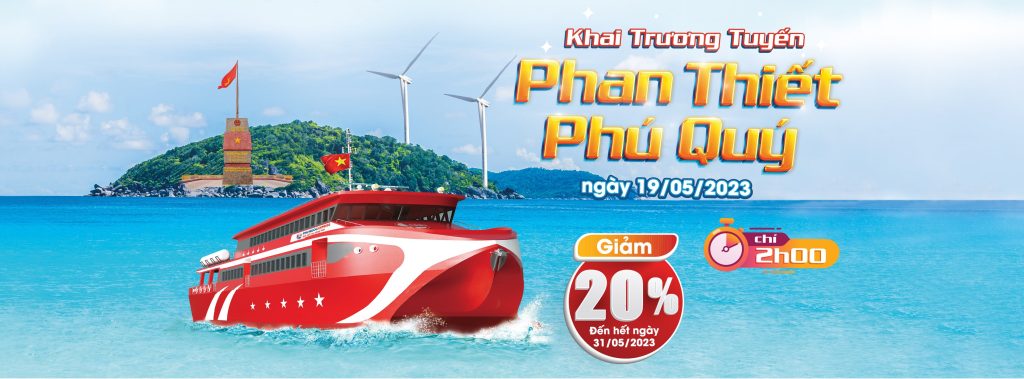Thanks to its warm waters, Phu Quy Island is an ideal habitat for slipper lobsters (locally known as tôm mũ ni). This species is easily spotted by local divers due to its distinctive appearance—large, flat antennae on its head that resemble the flared “ni hat” (a traditional Vietnamese headpiece), giving the lobster its unique name.
This famous local delicacy is prepared in a variety of ways: steamed, boiled, grilled… Slipper lobster meat is known for being sweeter and more aromatic than spiny lobster, and it’s especially nutritious. Because the ingredient is already a delicacy, it doesn’t need elaborate preparation to shine.
The simplest—and most popular—methods are steaming, grilling with lemongrass, garlic and chili, or stir-frying with salt. The most crucial element of a delicious slipper lobster dish is the freshness of the lobster. For steamed or grilled versions, the shell turns golden while the meat remains tender, white, thick, and richly sweet. Just a touch of lime salt and pepper is enough to elevate the flavor.
Typically, the lobsters are cleaned, lightly seasoned, then steamed. Near the end of the steaming process, tuyết nhĩ (white fungus) is added. After three minutes, the dish is ready. The lobster meat comes out a vibrant pink, delightfully aromatic, firm yet tender, and naturally sweet.
For a gourmet experience, connoisseurs enjoy slipper lobster steamed with tuyết nhĩ, served with fresh herbs, green bananas, and cucumber—perhaps with a dab of wasabi and a glass of white wine to round it all out. Another popular option is slicing the lobster lengthwise, spreading a layer of cheese sauce over the meat, and baking it until golden. The result is irresistibly sweet lobster meat paired with creamy, savory cheese—an unforgettable flavor combination.
As mentioned earlier, Phu Quy’s coastal waters stay warm throughout the year. In summer, sea surface temperatures average 28°C to 29°C, while in winter, they dip only slightly to about 25°C to 26°C. This narrow range of fluctuation—just 2°C to 3°C—ensures a stable and favorable environment for marine life like slipper lobsters to thrive.



